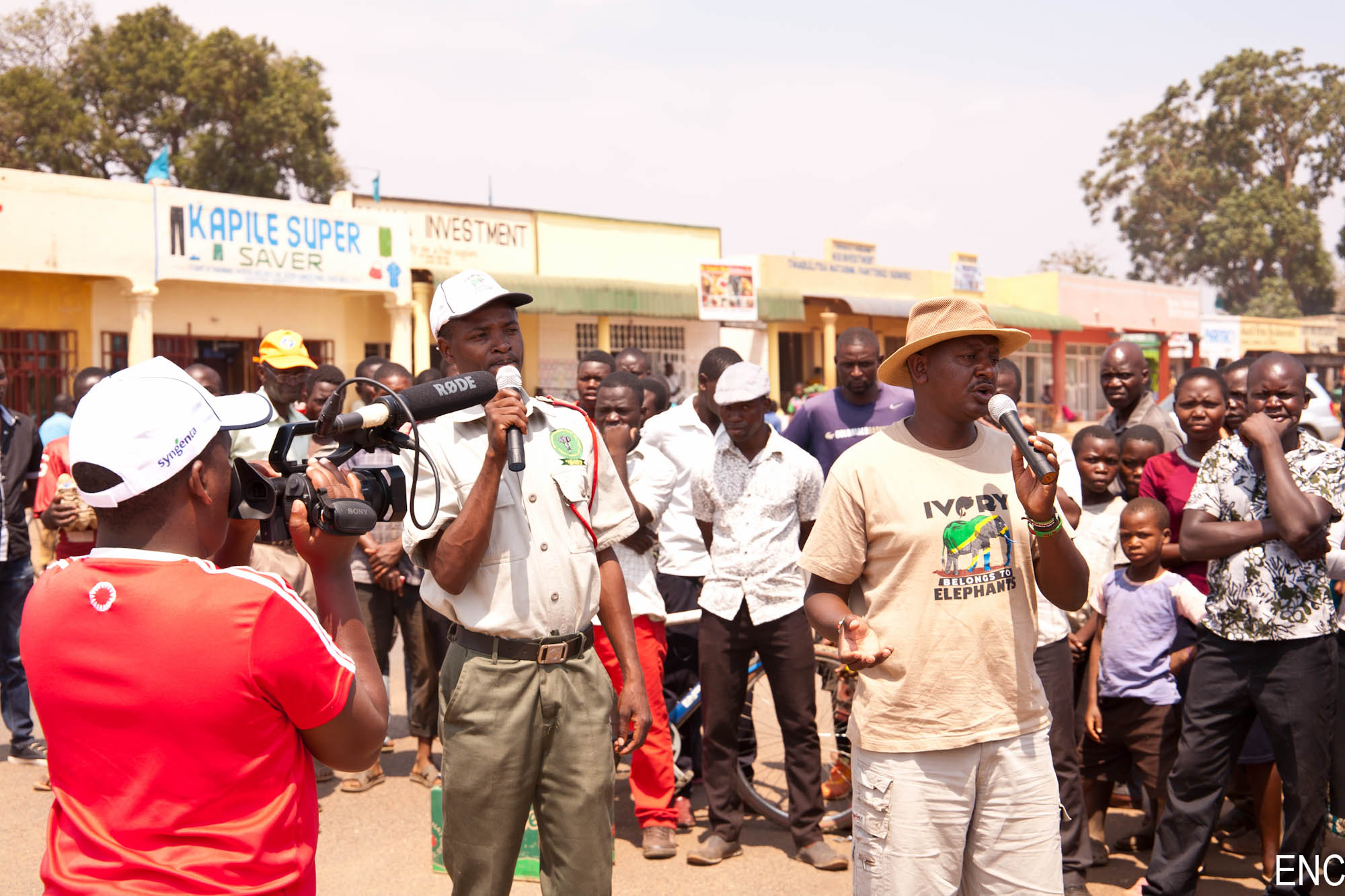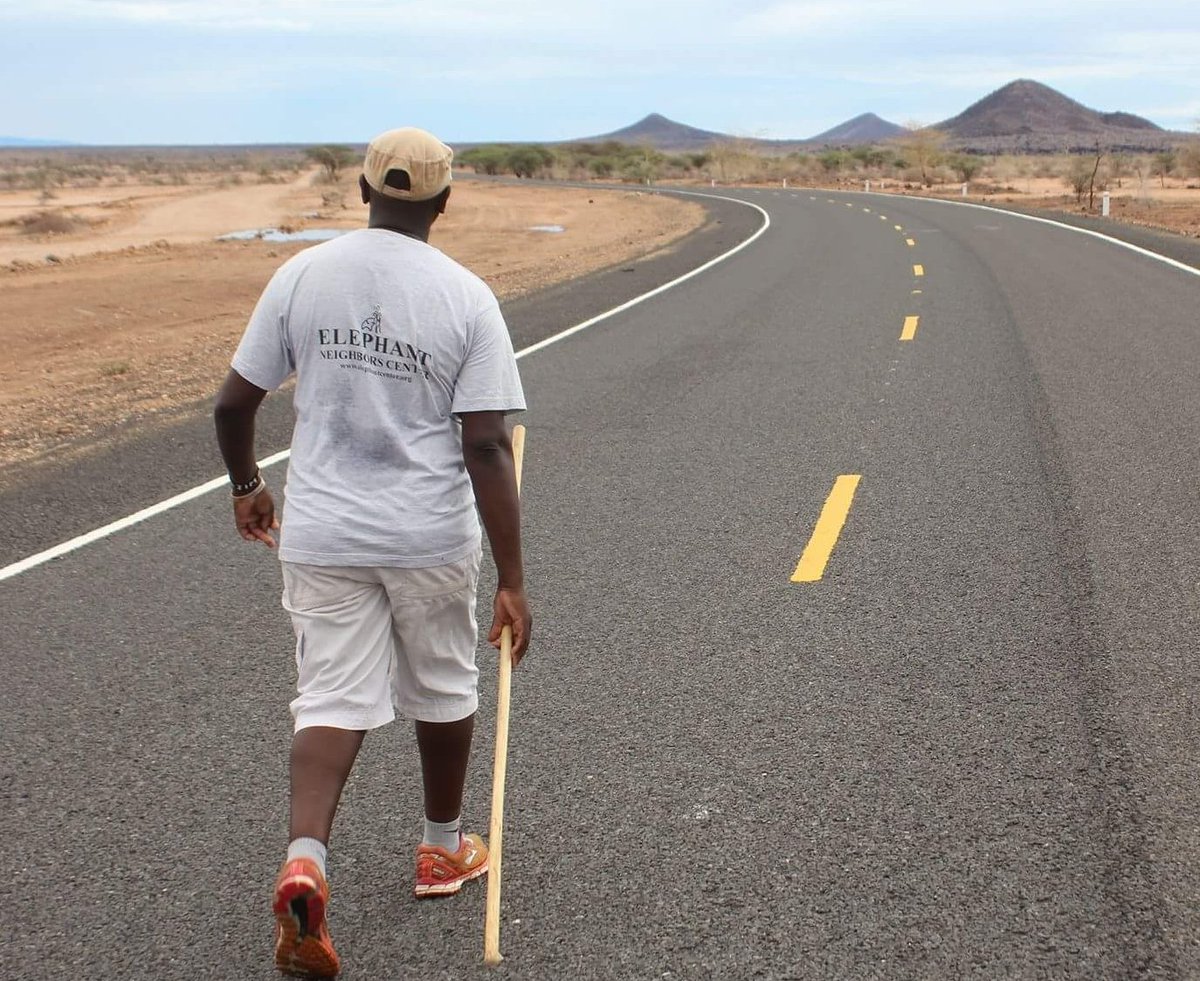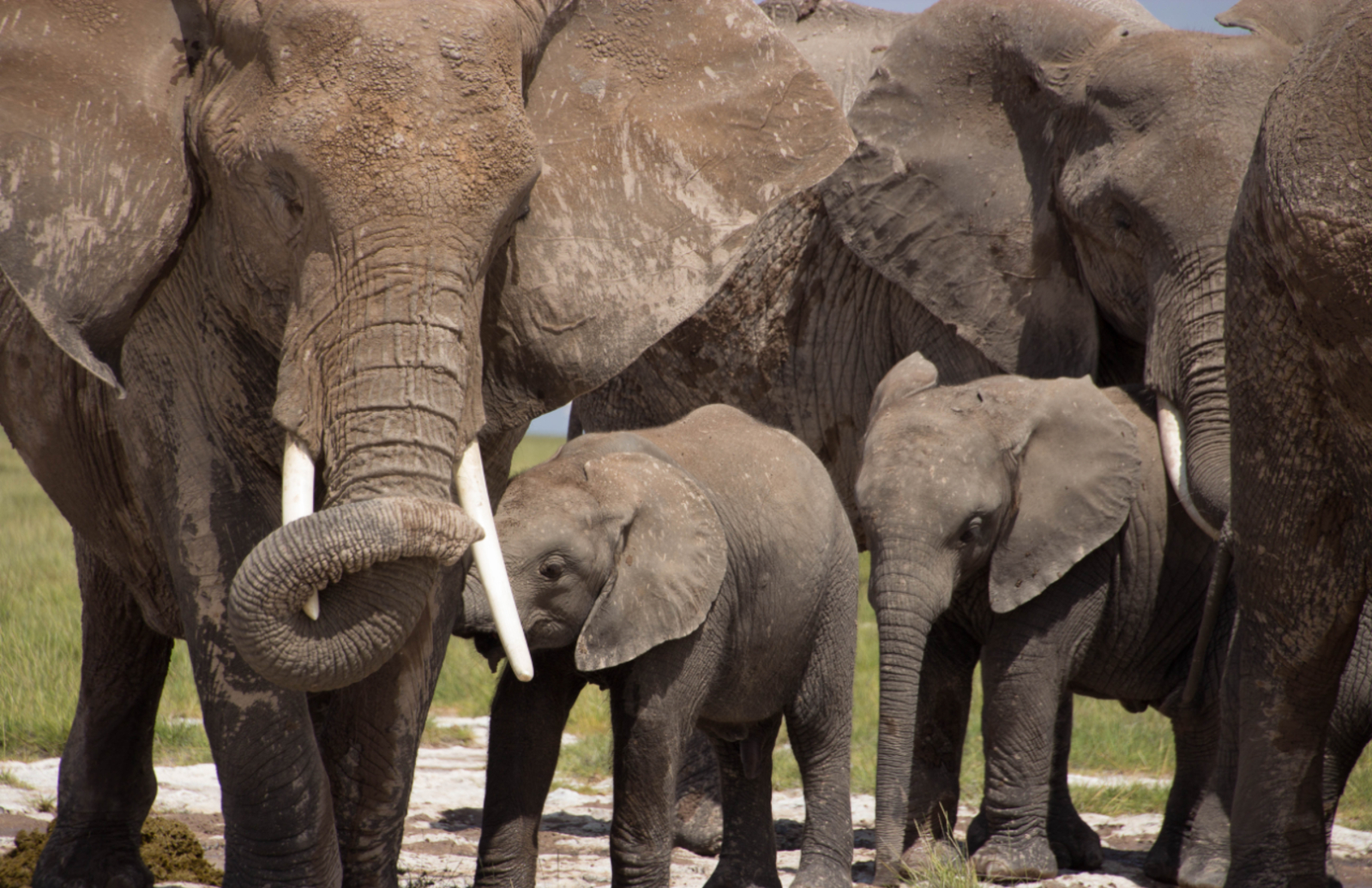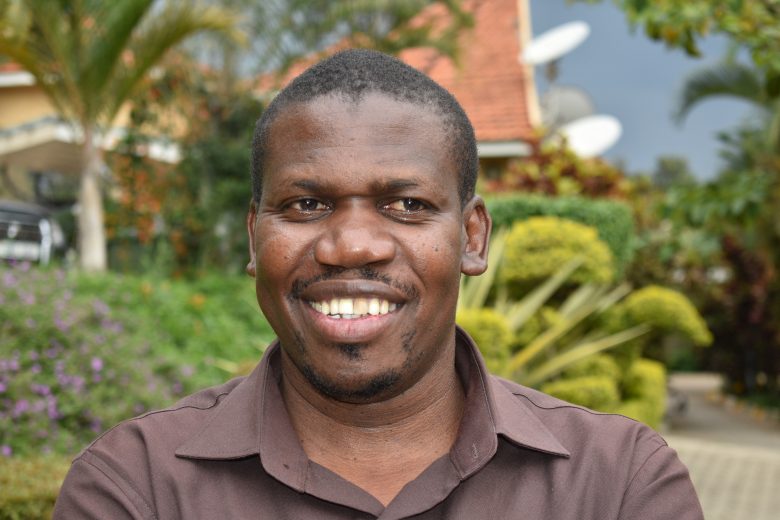Jim Justus Nyamu is an Elephant Research Scientist and a passionate activist against Elephant Poaching and Ivory Trade. He is also a Co-Founder and current Executive Director of the Elephant Neighbors Center. This is a Non-Governmental Organization based in Nairobi, Kenya whose aim is to;
protect the elephant as a species of important national interest by transforming the attitudes of Kenyans at all levels towards an environmentally sensitive livelihood.
In addition, Nyamu has previously held positions at the Kenya Wildlife Service (KWS) and African Conservation Center. Most importantly, he is best known for his walks aimed at raising awareness on the value of elephants, how to mitigate human-elephant conflict and raising awareness on poaching.
In February 2013, he walked from Mombasa to Nairobi, a distance of about 500kms (311 miles). Again in May and June 2013, he walked from Maasai Mara to Nairobi covering about 1,710kms (1,063 miles). And finally in September and October 2013, he walked about 901 kms (560kms) from Boston MA to Washington DC.
The walk which ended on 4th October in Washington DC coincided with an International March for elephants. This is a wildlife event that was organized by the David Sheldrick Wildlife Trust (DSWT). DSWT subsequently sponsored marches in 15 cities that included London, Cape Town and Bangkok. In solidarity, other independently organized sympathetic groups also marched in about 25 cities around the world.
As the year 2013 came to a close, on 14th November 2013, Nyamu attended the “Ivory Crush” mandated by the Obama administration. As a result, 6 tonnes of ivory were destroyed in Denver, Colorado.
Indeed, this is not an isolated case as the late Kenyan 2nd President, Daniel Arap Moi in 1989 oversaw the first ever public burning of ivory in the country to discourage ivory trade. Years later in July 2011, Kenya’s 3rd president, Mwai Kibaki, also set fire to a pile of almost 5 tonnes of elephant ivory. And probably the heaviest of them all was the 105 tonnes of ivory that the current president of Kenya, Uhuru Kenyatta burnt in April 2016. This was proof of the spike in elephant poaching and Ivory Trade over the years.
As of 2016, Nyamu had already covered 8,510 Kms (5,288 miles) just walking for the elephant cause. Once described as an Icon of Elephant Conservation in Africa by Ugandan Director of Wildlife and Antiquities, James Lutaalo, he proceeded to be recognized as the 2016 EcoWarrior. This is an award recognizing those who make an outstanding contribution to the ecotourism practice in Kenya.
On April 11th 2019, the current First Lady of Kenya, Margaret Kenyatta, attended a documentary screening of Ivory Belongs to Elephants facilitated by Nyamu at the National Museums of Kenya. The 25 mins long documentary highlights the 15,411kms (9576 miles) that Nyamu has since walked through 8 countries across the globe to raise awareness on the need to protect and conserve the African elephant.
In this interview with ABOC Directory, Nyamu discusses his inspiration to take up wildlife as a study, how the Covid-19 pandemic has impacted him and the #ivorybelongstoelephants campaign
Lorna: Why elephants and not any other wildlife species?
Nyamu: Well, I wouldn’t necessarily say I only advocate for elephants. I am concerned about all the wildlife specie. However, my interest in elephants stems from the fact that they are keystone species. Elephants need a huge area for foraging. They eat up to 300 kgs of food and drink up to 240 ltrs of water on a daily basis.
So due to them being identified as keystone species, their conservation is highly crucial hence their additional categorization as flagship species. In addition, elephants are identified as the most endangered free ranging species unlike rhinos which are in sanctuaries in the country. Without the 24 hour surveillance, you can already picture the kind of threat to these animals because of their ivory considered lucrative business in some quarters.
Lorna: I am curious to learn a little bit more about your background growing up and I am sure, so are our readers. Could you kindly tell us about it and what influenced your interest in wildlife study?
Nyamu: My background is quite interesting in the sense that I grew up in the Aberdares and as you may know, this is an area teeming with wildlife. While younger, people used to eat elephants. I remember kids bringing elephant meat to school and it was very tough. Moreover, poaching at the time was equally at an all time high.
I used to live with my grandmother and every now and then, you would hear gunshots. So I would sometimes ask her what was going on and then she would tell me it was the warders trying to scare off the poachers. One of my uncles was at Kijabe High School and he was also a member of the Wildlife Club of Kenya. As a result, he once brought me a Komba Magazine which was a publication for the Wildlife Clubs of Kenya in schools.
Of course I immersed myself in the magazine and in a way, it further sparked that interest in wildlife in me. When I joined Form 1, I was disappointed to learn that there was no such club in my school given just how much I wanted to join as soon as I got to high school. Not one to be easily deterred, I soon enough founded that very wildlife club with the help of my History teacher and another uncle of mine who was in Form 3 in the same school.
My background is quite interesting in the sense that I grew up in the Aberdares and as you may know, this is an area teeming with wildlife. While younger, people used to eat elephants.
As a result of my efforts, I was lucky to get a scholarship after Form 4 to attend the Mweka Wildlife College in Moshi, Tanzania. Thereafter, I got an internship at KWS as a young Research Assistant. This was in the late 90s to early 2000s. My first job was still at KWS as a Research Assistant.
I was also involved in statistics and counting of elephants while using scientific methods meaning we weren’t physically counting them. This was a project funded by World Wildlife Fund (WWF) and saw me concentrate on regions in the country such as, Maralal, Shimba Hills, Aberdares and Arabuko Sokoke.
In 2003, I enrolled for a Post-graduate course in Community Development and Project Planning and Management. I was interested in engaging the community as well when it came to wildlife conservation and management. Afterwards in 2005, I was seconded by KWS to the African Conservation Center. My work entailed observing elephant movement not only in Kenya but across the border as well.
I remember in 2007 is when elephant poaching started going up. The reason was because certain South African countries namely, South Africa, Namibia, Botswana and Zimbabwe downlisted their elephant populations from Appendix I to Appendix II. This inevitably made it easier to trade in Ivory. So as this was going on, I was still at the African Conservation Center until 2012.
Sometime in that year of 2012, I was the only African to attend a certain conference in the Netherlands. When I came back home, I purposed to educate people more on elephant conservation and started thinking of possible ways to do it. I subsequently resigned from my position and proceeded to co-found the Elephant Neighbors Center.
Lorna: Before the Covid-19 pandemic, I understand you were already actively planning for the #IvoryBelongstoElephants Campaign. How has this pandemic impacted your plans on the same?
Nyamu: The #IvoryBelongstoElephants Campaign was a project I intended to cover the whole of Africa. Furthermore, I had been planning for it for a while and so I had got most of the groundwork already done. With the pandemic situation, I have since been forced to push the walk and campaign forward. I am particularly grateful that most of the partners understand this.
However, the impact has been hardest on my physical and mental health. I find myself struggling with fatigue, anxiety and stress. I have also not been sleeping well from March 2020. When I plan for these walks, I ensure that I am always relaxed during the walk itself. This routine was abruptly cut off with the pandemic and since gyms have not been functioning, I have no place where I can train and get tired.
I must admit though that it has not only been doom and gloom. Currently, I am engaging in regular tree planting to cope. My hope is that with time, my sleep pattern improves to the point where it goes back to normal.
Lorna: In terms of adequate funding for this particular campaign, how has that been so far?
Nyamu: So far, I haven’t really received any sustainable grant despite the Ministry’s goodwill. And of course as an African Conservationist, there are a lot of challenges. Many times, I am often mistaken for a White because Africans are used to Whites carrying out conservation efforts in the continent. However, I have since established a Crowdfunding assisted by friends which I have been reliant on.

Nyamu (in T-shirt) educating the public on the importance of elephant conservation. Photo courtesy of Elephant Neighbors Center.
To donate towards the #IvoryBelongstoElephants Campaign and help Nyamu reach as many as possible with his important message on Elephant Conservation, kindly visit donate
See more on Movers & Shakers
Address & Contact Details
P. O. Box 14005 – 00100 Nairobi, Kenya
+254-713-353-060








